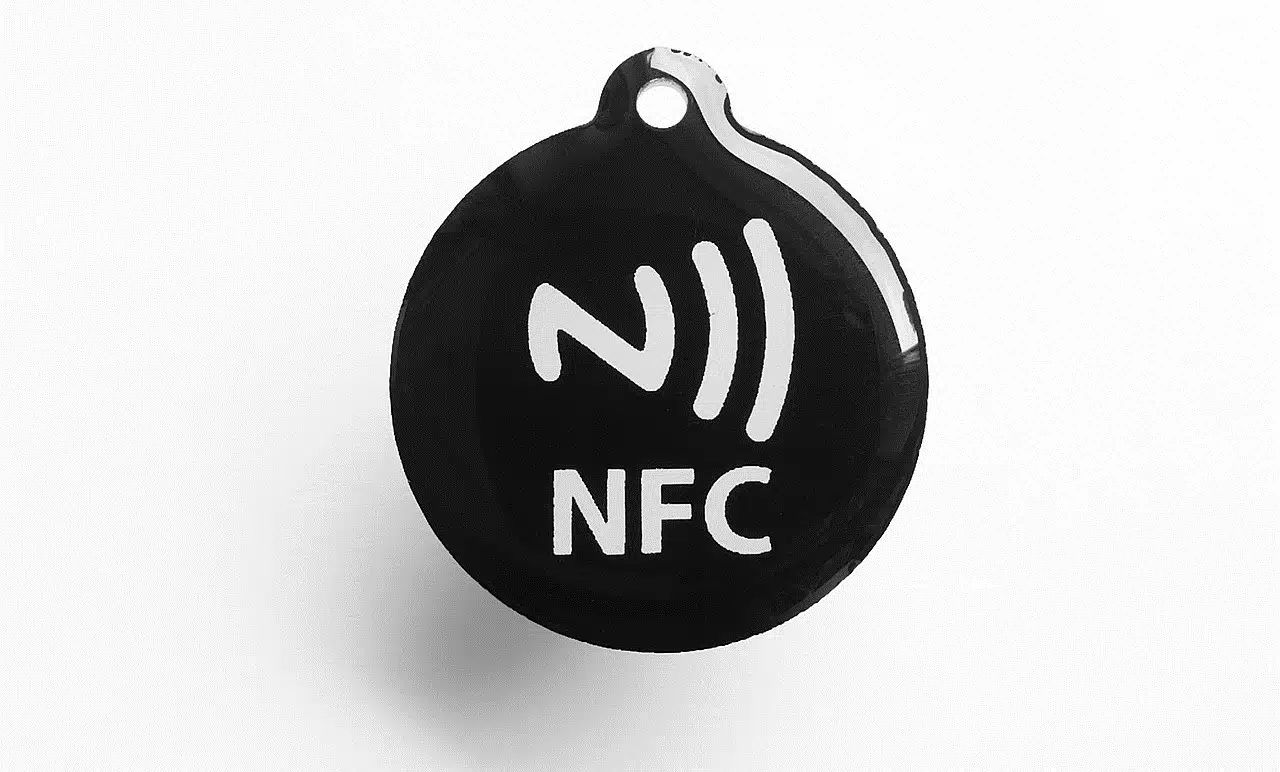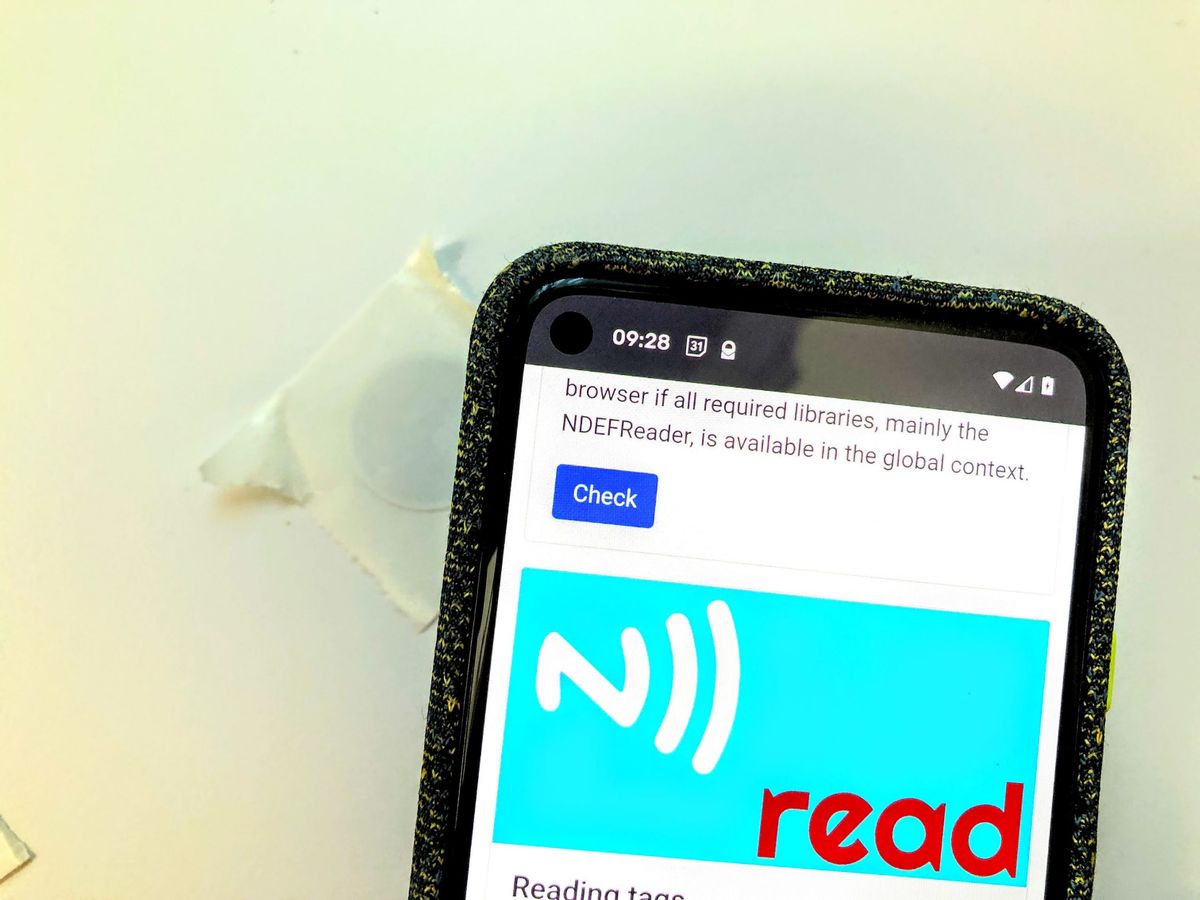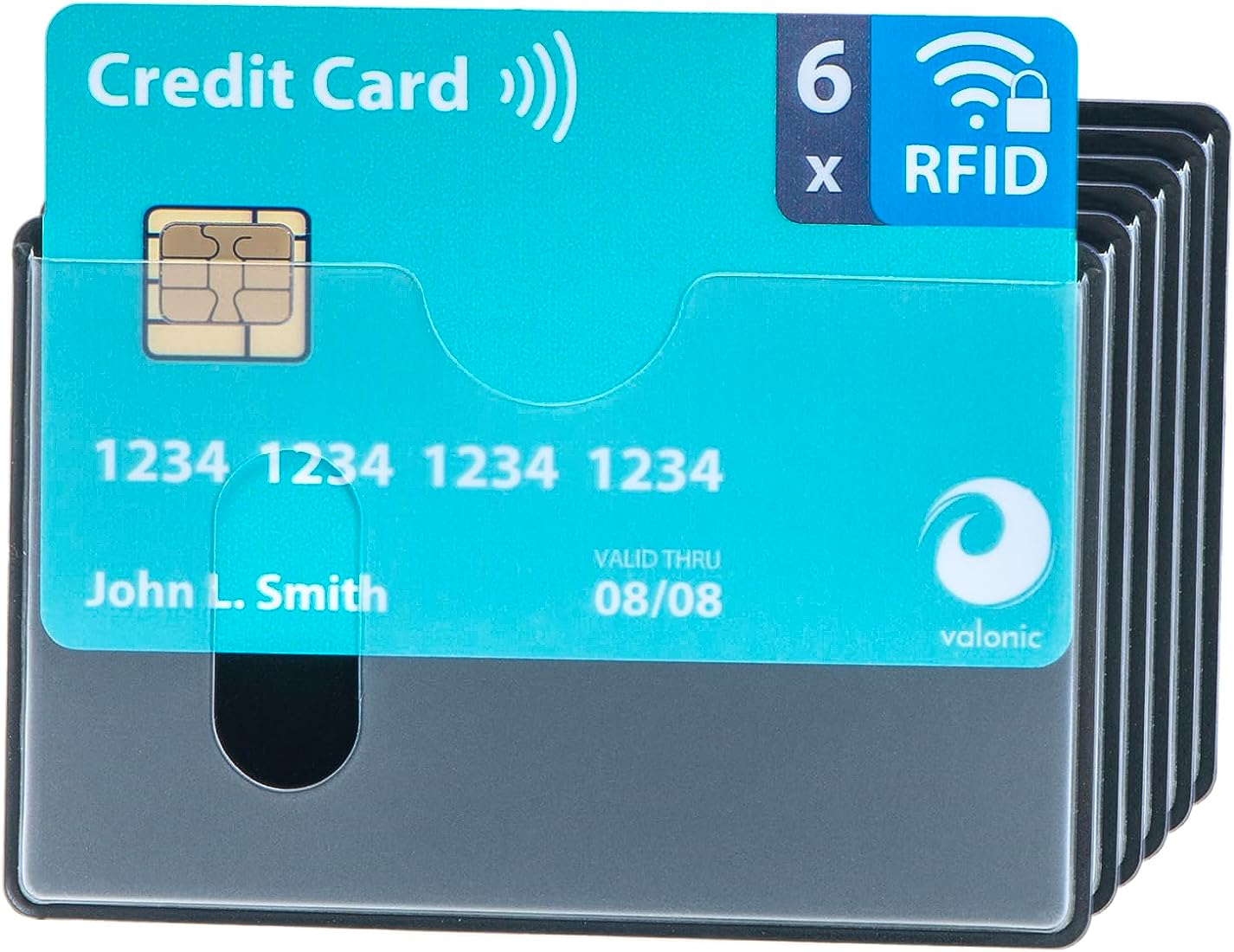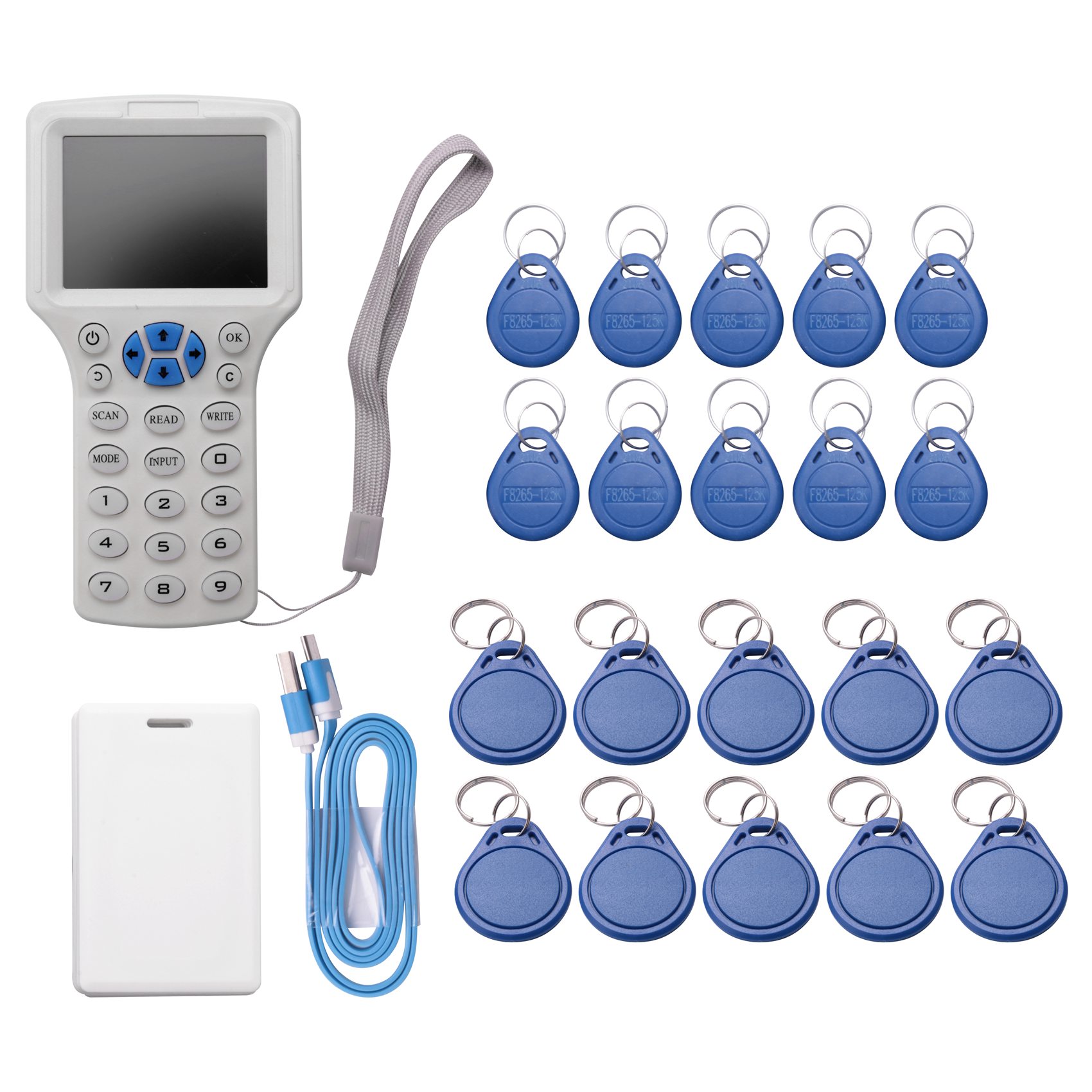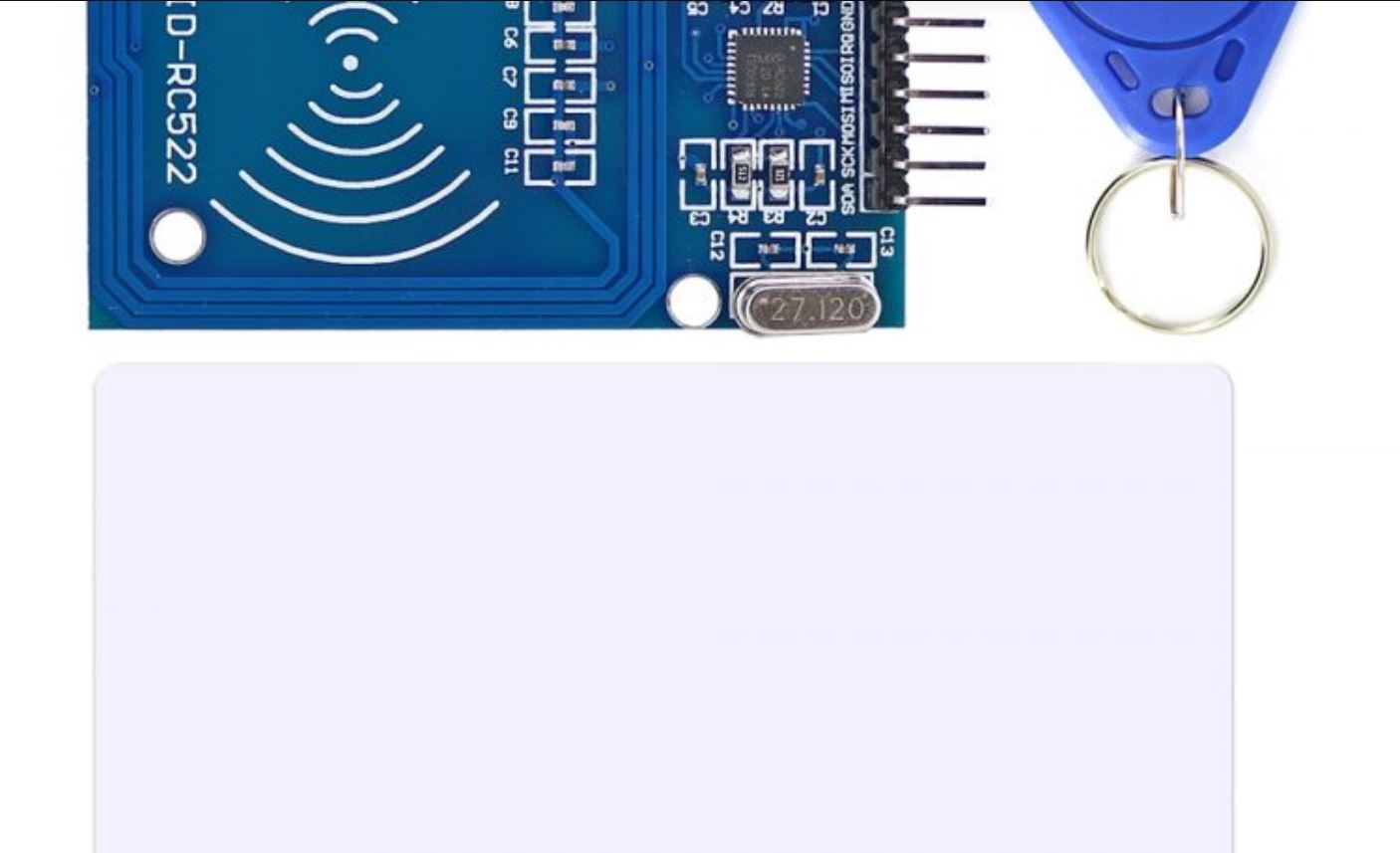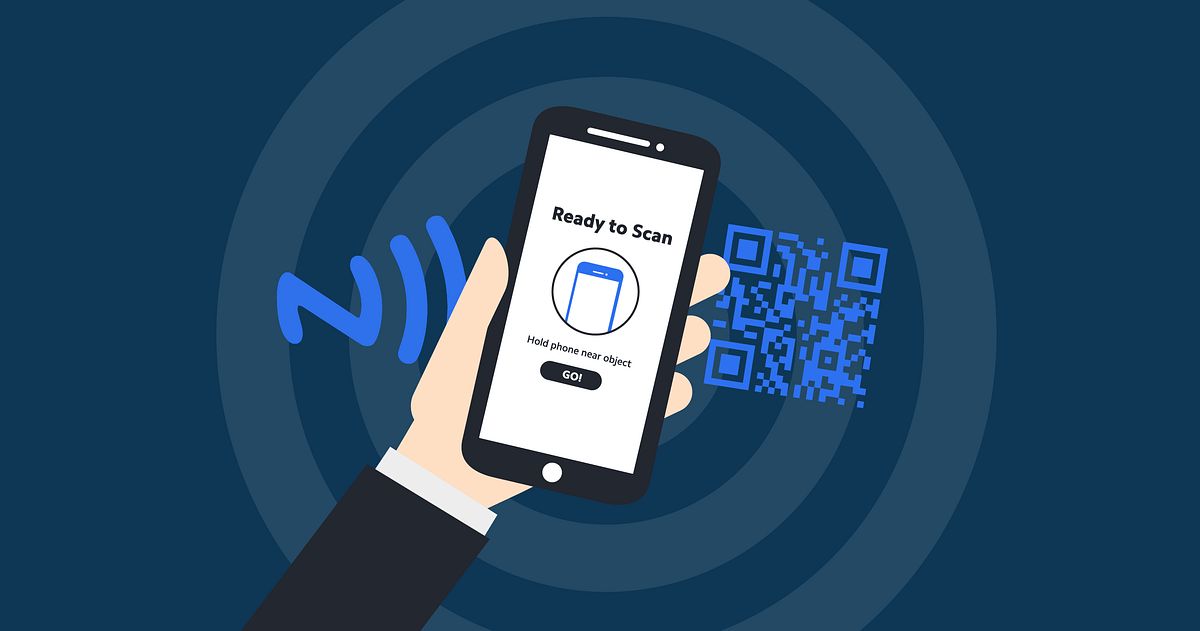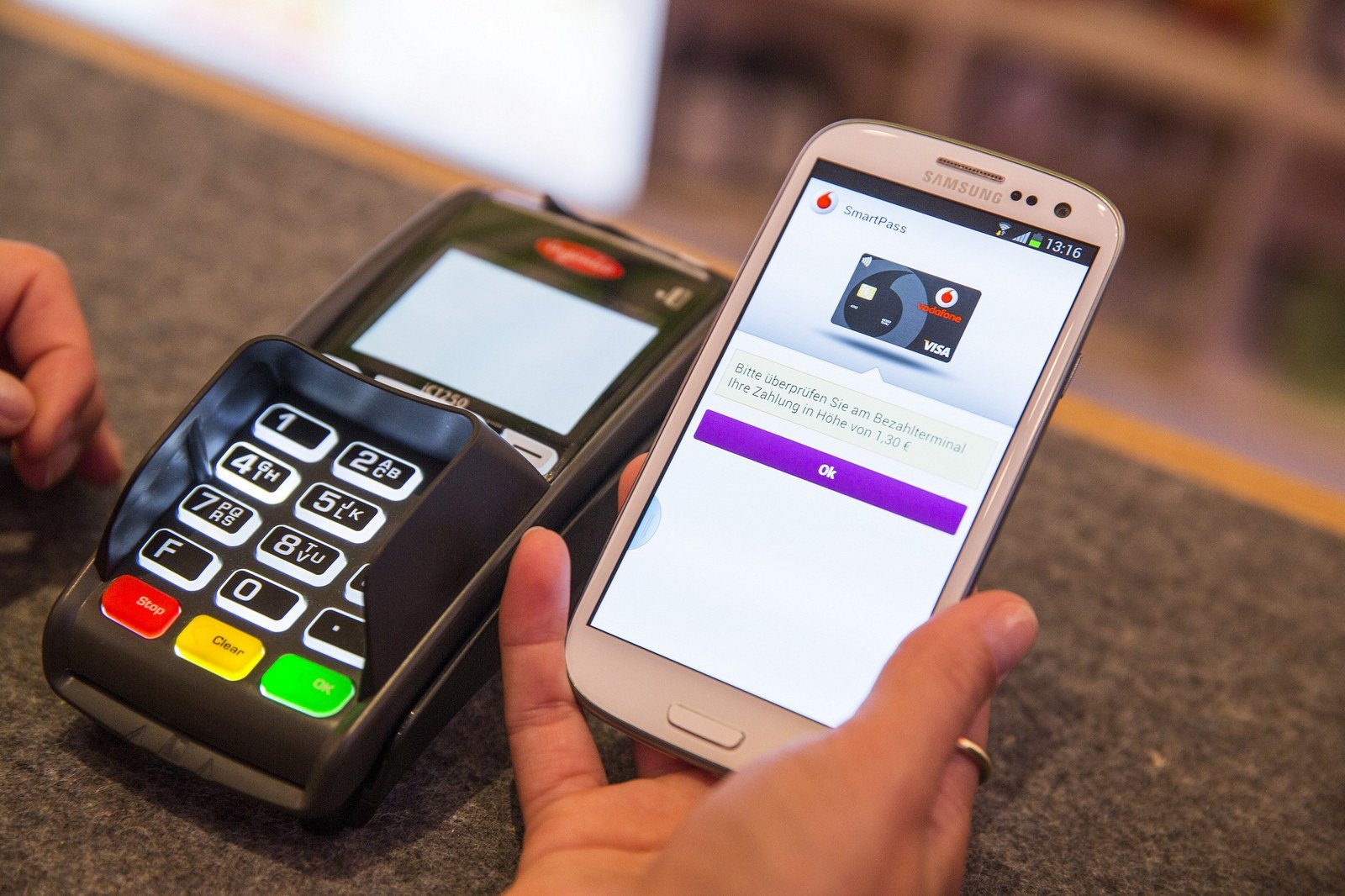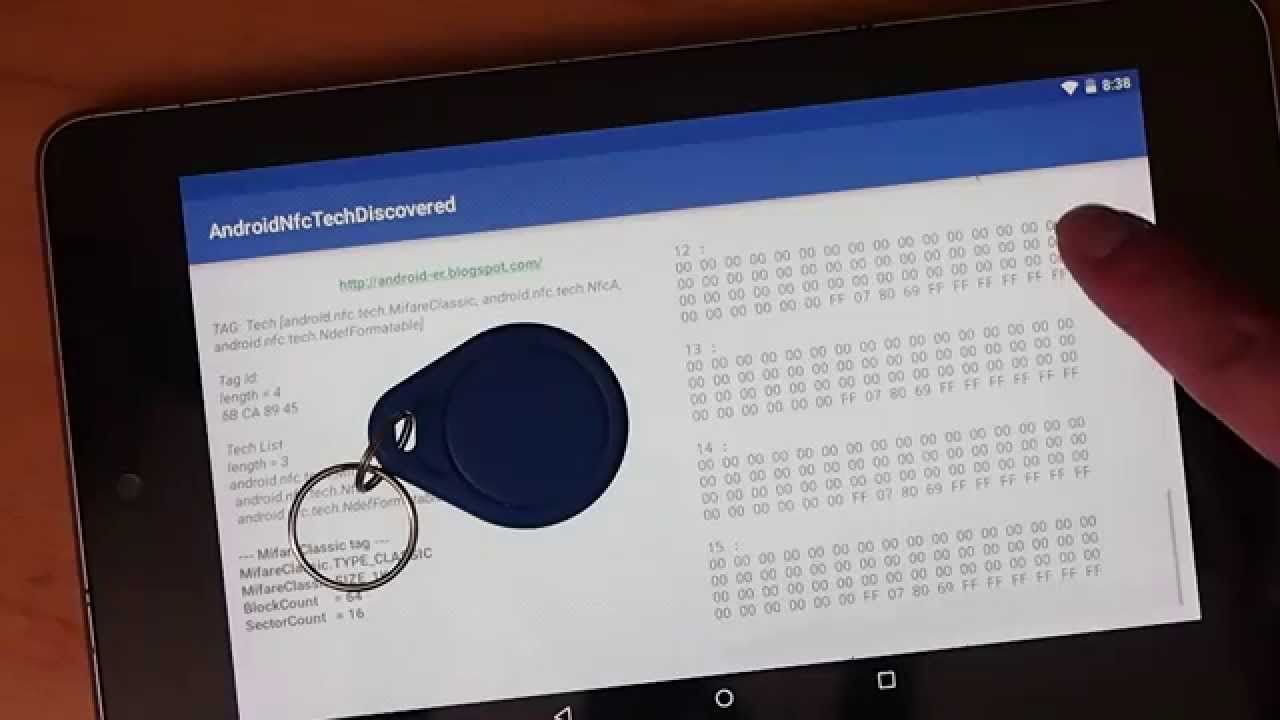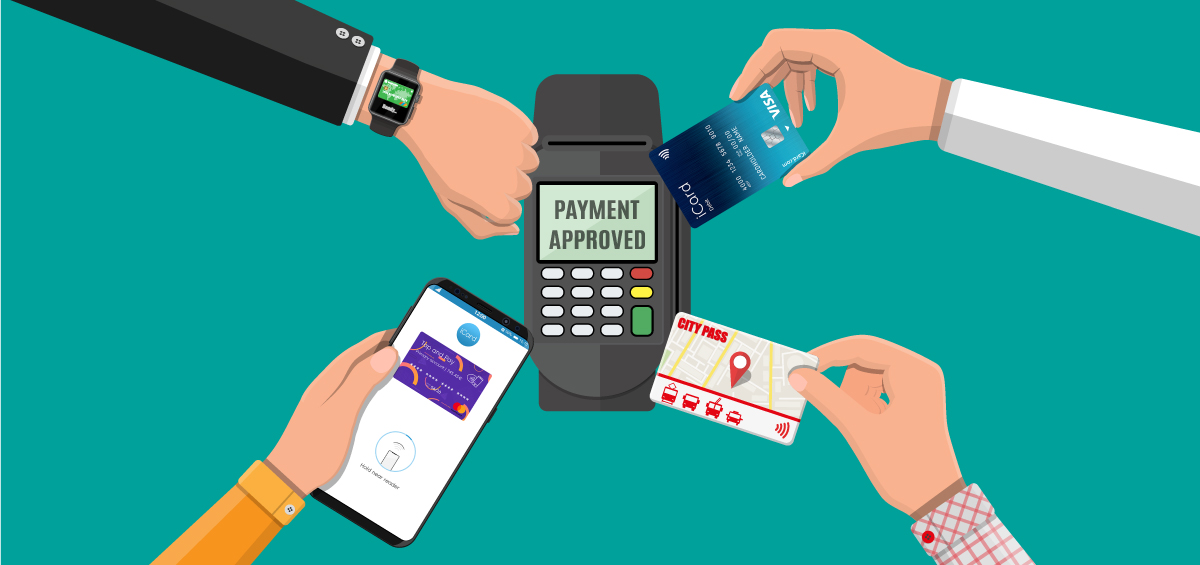Introduction:
Have you ever come across the message “NFC Tag Detected” on your device and wondered what it means? In our increasingly connected world, NFC technology has become a common feature on smartphones, tablets, and other devices. NFC, or Near Field Communication, enables wireless communication between devices over short distances.
Understanding NFC and how it works can help you make the most of this technology and explore the various uses of NFC tags. This article aims to provide you with an overview of NFC, explain how NFC tags function, discuss the reasons behind the “NFC Tag Detected” message, and offer insights into the possibilities NFC tags present.
NFC is a radio frequency technology that allows two devices to establish a connection when they are near each other. It operates on the principle of electromagnetic induction, where an initiator device generates an electromagnetic field that the target device detects and reacts to. The communication between devices is quick, secure, and requires no physical contact.
NFC tags are small, programmable chips that store and transmit information. These tags are embedded in various objects, such as stickers, keychains, posters, and even product packaging. When your device detects an NFC tag, it immediately retrieves the information stored on it, triggering specific actions or displaying relevant content.
NFC technology has a wide range of applications. It is commonly used for contactless payments, allowing users to make transactions by simply tapping their NFC-enabled devices on payment terminals. Additionally, NFC tags are utilized for accessing digital content, like websites, social media profiles, or documents. They can also be used for automation purposes, allowing users to quickly change device settings, control smart home devices, or launch specific apps with a simple touch.
Seeing the “NFC Tag Detected” message on your device means that it has detected an NFC tag nearby. It indicates that the tag’s embedded information is ready to be accessed and utilized. Your device may prompt you to take actions based on the content of the tag, whether it’s visiting a website, opening an app, or initiating a payment.
In the upcoming sections, we will delve deeper into how your device detects NFC tags and the various possibilities you have with these tags. Additionally, we’ll explore how you can disable NFC on your device, should the need arise.
What is NFC?
NFC, or Near Field Communication, is a wireless technology that enables communication between devices in close proximity to each other. It operates on the principle of electromagnetic induction, allowing two devices to establish a connection without the need for physical contact.
NFC is a subset of radio frequency identification (RFID) technology, which is widely used for various applications such as access control, inventory management, and contactless payments. However, unlike RFID, NFC focuses on short-range communication, typically within a range of a few centimeters.
One of the primary reasons for the widespread adoption of NFC technology is its compatibility with smartphones and other portable devices. Many modern smartphones come equipped with NFC capabilities, allowing users to interact with NFC-enabled tags and other devices.
The core components of an NFC system include an initiator device and a target device. The initiator device generates an electromagnetic field, which the target device detects and responds to. This interaction between the devices enables data exchange, making NFC ideal for various applications.
NFC operates at 13.56 MHz, which is a globally recognized frequency for contactless communication. This standardized frequency ensures compatibility and interoperability between different devices and systems.
Moreover, NFC supports two different modes of operation: active and passive. In active mode, both devices generate and transmit electromagnetic fields, enabling bidirectional communication. Passive mode, on the other hand, involves one device, usually the initiator, generating the electromagnetic field while the other device, the target, only responds to it.
It’s important to note that NFC technology can be used for both card emulation and peer-to-peer modes of communication. In card emulation mode, an NFC-enabled device can act as an NFC card, allowing it to make contactless payments or act as a digital pass for transportation systems. In peer-to-peer mode, two NFC-enabled devices can communicate and exchange data with each other directly.
Overall, NFC technology provides a convenient and secure means of communication between devices in close proximity. Its versatility and compatibility make it suitable for various applications, ranging from contactless payments and mobile ticketing to simplified device pairing and data transfer.
How do NFC tags work?
NFC tags are small, programmable chips that contain information that can be read and written by NFC-enabled devices. These tags rely on the principle of electromagnetic induction to establish communication with devices in close proximity.
When an NFC-enabled device, such as a smartphone, comes into contact with an NFC tag, the device’s NFC antenna generates a magnetic field. This magnetic field induces a current within the NFC tag, providing it with the necessary power to transmit data back to the device.
NFC tags come in various forms, including stickers, keychains, cards, and even embedded within products or packaging. Each tag contains a unique identifier and can store a certain amount of information, depending on its capacity.
One of the most common types of NFC tags is the NDEF (NFC Data Exchange Format) tag. NDEF tags can store different types of data, such as text, URLs, contact information, or even commands to trigger specific actions on the device.
When an NFC-enabled device detects an NFC tag, it reads the data stored on the tag and interprets it according to the supported formats. For example, if the NFC tag contains a URL, the device can automatically open the corresponding web page in the browser.
The NFC communication process consists of two main phases – initialization and data transfer.
In the initialization phase, the NFC-enabled device generates a magnetic field and searches for nearby NFC tags. Once a tag is detected, the device establishes a connection with the tag and retrieves its identification information.
In the data transfer phase, the device and the tag exchange information. This can involve reading the data stored on the tag or writing new data onto the tag. The device uses the retrieved identification information to determine the type of data contained within the tag and the appropriate action to take based on that data.
It’s important to note that NFC tags can also be programmed to perform specific actions called “NFC tag actions.” These actions are pre-defined commands or sequences of operations that the device triggers when it interacts with an NFC tag. This functionality allows for automation and enables users to perform certain tasks or configurations with a simple touch to an NFC tag.
In summary, NFC tags work by utilizing electromagnetic induction to establish communication between the tag and an NFC-enabled device. These tags store data that can be read and written by the device, allowing for various applications such as information retrieval, automation, and seamless interactions with digital content.
Common uses for NFC tags
NFC tags have gained popularity due to their versatility and ease of use. These programmable tags have found a wide range of applications across different industries, offering convenient and interactive experiences for users. Here are some common uses for NFC tags:
- Contactless Payments: NFC-enabled tags are commonly used for contactless payments. By storing your credit card information on an NFC tag, you can simply tap your device on a payment terminal to make quick and secure transactions. This feature is widely supported by major financial institutions and payment providers.
- Smart Marketing: NFC tags are often utilized in marketing campaigns to provide interactive experiences for users. By placing NFC tags on promotional materials like posters, flyers, or product packaging, businesses can deliver targeted content, special offers, or links to websites directly to users’ devices. This enhances engagement and allows for more personalized marketing strategies.
- Access Control: NFC tags are widely used for access control systems, such as keyless entry systems in buildings or hotels. Users can simply hold their NFC-enabled devices close to the NFC reader, allowing for easy and secure access without the need for physical keycards.
- Smart Home Automation: NFC tags can be programmed to trigger specific actions on devices within a smart home ecosystem. For example, by placing an NFC tag near your front door, you can set up a sequence of commands that will automatically turn off lights, lock doors, and adjust thermostats when tapped with your device. This streamlines daily routines and enhances convenience in managing smart home devices.
- Information Retrieval: NFC tags can provide quick access to information or content. For example, museums can place NFC tags near exhibits, and visitors can tap their devices to the tags to access detailed information about the artwork or artifacts. Similarly, NFC tags can be used in retail stores to provide product details, reviews, or exclusive offers with just a touch.
- Device Pairing and Configuration: NFC tags can simplify the process of pairing and configuring devices. For instance, by tapping an NFC tag with your smartphone, you can automatically connect to Bluetooth speakers, Wi-Fi networks, or even configure settings such as display brightness or volume levels. This eliminates the hassle of manual setup and enhances user experiences.
These are just a few examples of the numerous applications for NFC tags. As NFC technology continues to evolve, the range of uses will only expand, enabling even more convenient and innovative interactions between devices and users.
Why am I getting a “NFC Tag Detected” message?
If you’re receiving a “NFC Tag Detected” message on your device, it means that your device has detected the presence of an NFC tag in its proximity. There are a few reasons why you may be encountering this message:
- Physical contact: NFC tags require close proximity to be detected by your device, typically within a few centimeters. If you’re holding an NFC tag or have one in close proximity to your device, it will trigger the “NFC Tag Detected” message.
- Intentional interaction: Some applications and services are designed to prompt the “NFC Tag Detected” message intentionally. For example, if you’re using an app that supports NFC tag interactions, such as a payment app or a loyalty program, tapping your device on an NFC tag may trigger the message as part of the desired user experience.
- Unintentional contact: In some cases, you may accidentally come into contact with an NFC tag. This can occur if you have an NFC-enabled device in close proximity to an object, such as a keychain, sticker, or card, that contains an NFC tag. The unintentional contact can trigger the “NFC Tag Detected” message, even if you didn’t intend to interact with the tag.
- Nearby devices: NFC tags can also trigger the “NFC Tag Detected” message if another NFC-enabled device is in close proximity to your device. This can occur when multiple devices are interacting with the same NFC tag, leading to the message being displayed on each device involved in the communication.
- Background scanning: Some devices have background NFC scanning enabled, which allows them to detect NFC tags even when not actively searching for them. This feature can provide seamless and convenient interactions with NFC tags but may result in intermittent “NFC Tag Detected” messages appearing on your device.
In most cases, the “NFC Tag Detected” message is a normal and expected behavior, indicating that your device has successfully recognized an NFC tag within its range. The specific action or response triggered by the tag depends on the app or service you’re using or the intention behind the interaction.
If you’re receiving the “NFC Tag Detected” message unexpectedly or frequently, you can disable NFC or adjust the NFC settings on your device to control the behavior and reduce the frequency of such messages.
Overall, the “NFC Tag Detected” message is a notification that your device has detected an NFC tag in its proximity. Whether intentional or accidental, it signifies that your device is ready to interact with the tag and perform actions based on the stored information or the app/service you’re using.
How does my device detect NFC tags?
When your device detects NFC tags, it utilizes its built-in NFC hardware and software to establish communication with the tag. The NFC detection process involves a few steps that allow your device to recognize and interact with NFC tags:
- Enable NFC: First, ensure that NFC is enabled on your device. NFC can usually be enabled or disabled through the device settings menu or quick settings panel. Once enabled, your device’s NFC functionality becomes available for use.
- Initiation phase: When your device’s NFC is enabled and a tag is brought within proximity, your device’s NFC hardware generates a magnetic field. This magnetic field energizes the NFC tag, supplying it with power to respond to the device’s communication.
- Tag detection: As the magnetic field is generated, your device’s NFC hardware continuously scans for nearby NFC tags. The scanning process involves searching for the presence of an NFC tag within a specified range, typically a few centimeters. If an NFC tag is detected within this range, your device proceeds to the next step.
- Tag identification: Once an NFC tag is detected, your device retrieves the identification information from the tag. This information allows your device to recognize the type of NFC tag it has detected and understand its capabilities. The identification information is crucial in determining how your device should behave when interacting with the tag.
- Data exchange: After identifying the NFC tag, your device proceeds to exchange data with it. Your device reads the data stored on the tag or writes new data onto the tag, depending on the interaction initiated by you or the app/service you’re using. This data exchange can involve retrieving URLs, launching apps, processing payment transactions, or triggering other predefined actions.
- Action or response: Based on the data exchanged with the NFC tag, your device performs the appropriate action or provides the desired response. This can include opening a webpage, displaying content, executing a command, or initiating a payment, among other possibilities.
The precise process of how your device detects NFC tags may vary slightly depending on the specific device model and operating system. However, the underlying principles remain the same. By utilizing electromagnetic induction and NFC technology, your device establishes communication with NFC tags, allowing for seamless interactions and enhanced functionality.
Understanding how your device detects NFC tags can help you make the most of this technology and explore the diverse range of applications and possibilities it offers.
What can I do with NFC tags?
NFC tags offer a wide range of possibilities and can be used in various creative and practical ways. Here are some common uses and actions you can perform with NFC tags:
- Contactless Payments: One of the most common uses for NFC tags is contactless payments. By storing your credit card information on an NFC tag, you can make convenient and secure transactions with just a tap of your NFC-enabled device on a payment terminal. This eliminates the need to carry physical credit cards and makes payments quicker and easier.
- Automate Tasks: NFC tags can be programmed to automate tasks on your device. For example, you can place an NFC tag near your bedside table and program it to enable “Do Not Disturb” mode and set an alarm when tapped with your device before going to sleep. Similarly, you can program an NFC tag in your car to toggle Bluetooth, launch your favorite music app, and open navigation when you start your car.
- Access Digital Content: NFC tags can be used to access digital content effortlessly. For instance, you can place an NFC tag near your entrance door and program it to provide guests with your Wi-Fi password when they tap their devices on the tag. Similarly, museums and galleries can use NFC tags to provide detailed information about exhibits when visitors tap their devices on the tags placed next to artworks.
- Launch Applications: NFC tags can be programmed to launch specific applications on your device. This can be useful for quick access to frequently used apps. For example, you can place an NFC tag on your desk and program it to open your schedule or to-do list app when tapped with your device.
- Device Pairing: NFC tags can simplify the process of pairing devices with each other. For instance, if you have Bluetooth headphones or speakers that support NFC pairing, you can pair them with your device by tapping the NFC tag embedded in them. This eliminates the need for traditional pairing methods and streamlines the connection process.
- Location-based Actions: NFC tags can trigger location-based actions when tapped with your device. For example, you can place an NFC tag near your office entrance and program it to automatically set your device to silent mode and enable Wi-Fi when you arrive at work.
These are just a few examples of what you can do with NFC tags. The possibilities are virtually endless, limited only by your imagination and the capabilities of your device and compatible apps. With NFC technology, you can streamline tasks, enhance convenience, and create personalized and interactive experiences tailored to your needs.
By exploring the potential uses of NFC tags and getting creative with their programming, you can unlock the full potential of this technology and enjoy its benefits in various aspects of your daily life.
How to turn off NFC on your device
If you want to disable NFC on your device, whether it’s to conserve battery life or for security reasons, you can easily turn it off using the following steps:
- Android devices:
- Go to the Settings menu on your Android device.
- Scroll down and tap on “Connected devices” or “Connections”, depending on your device model.
- Look for the “NFC” or “Near Field Communication” option and tap on it.
- Toggle the NFC switch to the “Off” position. The switch may appear as a physical toggle or a virtual switch.
- iOS devices (iPhone, iPad):
- Open the Settings app on your iOS device.
- Scroll down and tap on “Touch ID & Passcode” or “Face ID & Passcode”, depending on your device model.
- Enter your passcode to access the settings.
- Under the “Allow Access When Locked” section, toggle the NFC switch to the “Off” position.
- Windows devices:
- Swipe down from the top of the screen to open the Action Center.
- Tap on the “Expand” icon to display all available quick settings.
- Look for the “NFC” icon and tap on it to turn it off. The icon may appear as a virtual button.
By following these steps, you can easily disable NFC on your device. Keep in mind that the exact location of the NFC settings may vary depending on your device’s manufacturer and operating system version. If you’re having trouble finding the NFC settings, refer to your device’s user manual or perform a quick internet search specific to your device model.
Disabling NFC can help conserve battery life, as NFC consumes some energy even when not in use. Additionally, turning off NFC can enhance the security of your device by preventing unauthorized NFC tag interactions.
If you ever need to use NFC in the future, you can simply follow the same steps to re-enable it on your device.
Conclusion
NFC technology has become increasingly prevalent in our modern, connected world. It offers users convenient and seamless communication between devices in close proximity. By understanding NFC and its functionality, you can make the most of this technology and explore the vast possibilities offered by NFC tags.
In this article, we’ve discussed what NFC is and how NFC tags work. We’ve also explored some common uses for NFC tags, such as contactless payments, smart marketing, access control, and automation. Additionally, we’ve delved into the reasons behind the “NFC Tag Detected” message and how your device detects NFC tags. Furthermore, we’ve highlighted the various actions you can perform and the benefits that NFC tags provide. Lastly, we’ve provided steps to turn off NFC on your device if desired.
As NFC technology continues to evolve, we can expect to see even more innovative applications and use cases emerging. Whether it’s simplifying transactions, enhancing user experiences, or streamlining daily routines, NFC tags have the potential to make our lives more convenient and connected.
So, the next time you see the “NFC Tag Detected” message on your device, embrace the possibilities that NFC tags offer. Explore, experiment, and discover new ways to leverage NFC technology to enhance your productivity, convenience, and enjoyment of your devices.







